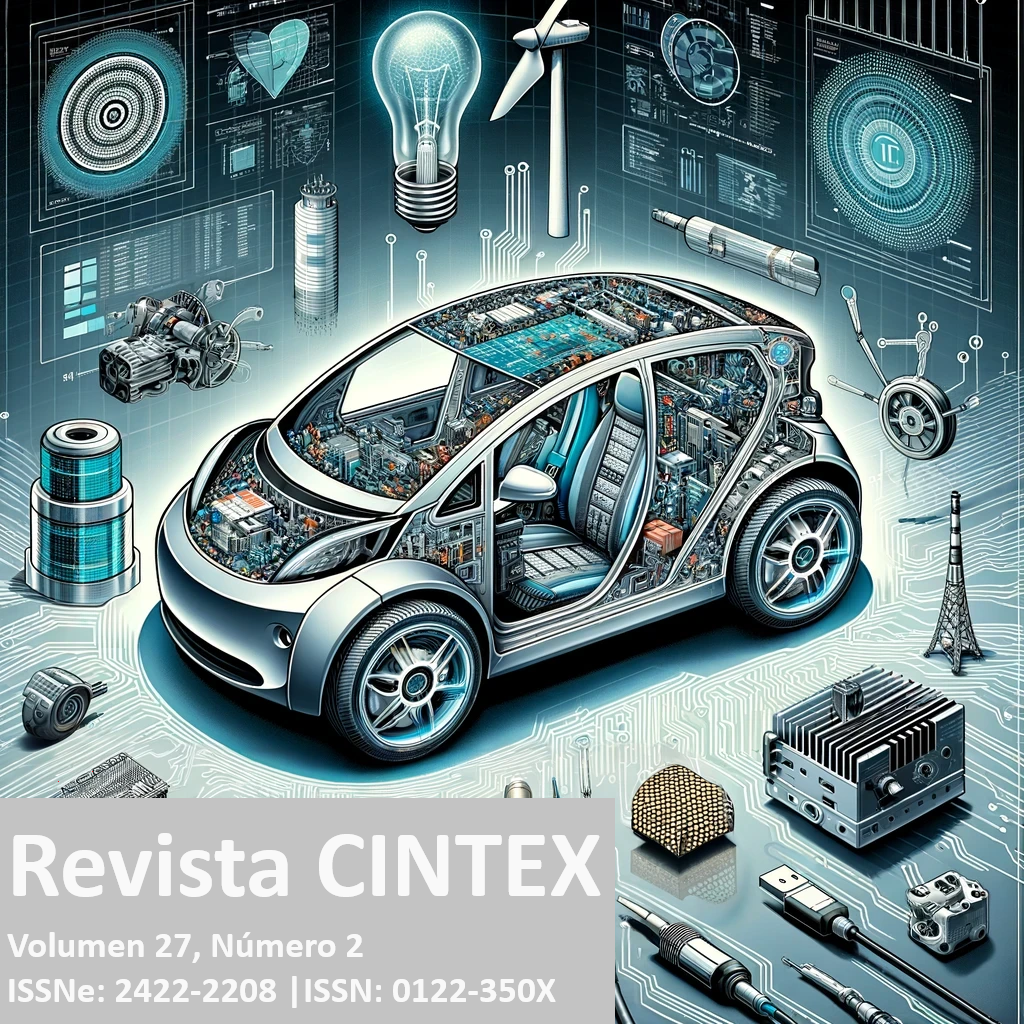Artificial Intelligence: benefits, considerations, and responsibilities for its development
DOI:
https://doi.org/10.33131/24222208.402Keywords:
Artificial Intelligence, Software development, Algorithm, Development risksAbstract
This article addresses the multiple benefits and ethical and technical considerations in developing Artificial Intelligence (AI). First, it highlights how AI has transformed healthcare, finance, manufacturing, and agriculture industries, improving efficiency and accuracy in tasks like medical diagnostics and predictive maintenance and contributing significantly to innovation and job creation. In humanitarian terms, AI also plays a crucial role in disaster management and environmental conservation, demonstrating its potential to foster a more equitable and sustainable society.
However, the development of AI is not without challenges. Developers must be aware of the risks associated with creating algorithms, such as collecting large volumes of data to train effective systems, and the importance of normalizing and analyzing this information to prevent biases and prediction errors. Moreover, the randomization of data is crucial to avoid biases and improve the generalization of models. There is a call to the Latin American community to actively participate in the development and regulation of AI, highlighting the importance of establishing transparent and fair standards that ensure AI algorithms benefit everyone equitably, especially in applications that involve physical interaction with humans, such as in robots and autonomous vehicles.
Downloads
References
M. J. López Baroni, «Las narrativas de la inteligencia artificial.», Rev. Bioét. Derecho, vol. 2019, n.o 46, pp. 5-28, 2019, doi: https://doi.org/10.1344/rbd2019.0.27280
J. J. Castro-Maldonado, J. A. Patiño-Murillo, y E. Camargo-Casallas, «Aplicación de analítica de datos en la evaluación de los procesos de investigación aplicada y desarrollo experimental para fortalecer las competencias del siglo XXI en una institución de educación no formal», Respuestas, vol. 27, n.o 2, pp. 6-27, may 2022, doi: https://doi.org/10.22463/0122820X.3541
J. J. Castro-Maldonado, J. A. Patiño-Murillo, A. E. Florian-Villa, y O. E. Guadrón-Guerrero, «Application of computer vision and low-cost artificial intelligence for the identification of phytopathogenic factors in the agro-industry sector», J. Phys. Conf. Ser., vol. 1126, p. 012022, nov. 2018, doi: https://doi.org/10.1088/1742-6596/1126/1/012022
C. Adarve Gómez, D. A. Castillo Carvajal, E. J. Restrepo Zapata, y H. Villar-Vega, «A review of virtual reality videogames for job-training applications», Rev. CINTEX, vol. 24, n.o 1, pp. 64-70, dic. 2019, doi: https://doi.org/10.33131/24222208.346
S. M. McKinney et al., «International evaluation of an AI system for breast cancer screening», Nature, vol. 577, n.o 7788, pp. 89-94, ene. 2020, doi: https://doi.org/10.1038/s41586-019-1799-6
D. V. Kute, B. Pradhan, N. Shukla, y A. Alamri, «Deep Learning and Explainable Artificial Intelligence Techniques Applied for Detecting Money Laundering–A Critical Review», IEEE Access, vol. 9, pp. 82300-82317, 2021, doi: https://doi.org/10.1109/ACCESS.2021.3086230
E. A. Duque Grisales, J. Molina Flórez, y N. Ossa Núñez, «Operación del sistema de autocontrol y gestión del riesgo de lavado de activos y financiación del terrorismo en empresas del sector comercial», Rev. CINTEX, vol. 23, n.o 1, pp. 32-42, oct. 2018, doi: https://doi.org/10.33131/24222208.306
T. Zonta, C. A. Da Costa, R. Da Rosa Righi, M. J. De Lima, E. S. Da Trindade, y G. P. Li, «Predictive maintenance in the Industry 4.0: A systematic literature review», Comput. Ind. Eng., vol. 150, p. 106889, dic. 2020, doi: https://doi.org/10.1016/j.cie.2020.106889
D. Sanin Villa, S. Gallego Valencia, y Y. P. Arboleda Urrea, «Implementation of autonomous maintenance to pneumatic tools in an assembly line», Rev. CINTEX, vol. 26, n.o 2, pp. 14-21, dic. 2021, doi: https://doi.org/10.33131/24222208.365
S. Y. Liu, «Artificial Intelligence (AI) in Agriculture», IT Prof., vol. 22, n.o 3, pp. 14-15, may 2020, doi: https://doi.org/10.1109/MITP.2020.2986121
C. A. Ramírez Gómez, «Aplicación del Machine Learning en agricultura de precisión», Rev. CINTEX, vol. 25, n.o 2, pp. 14-27, dic. 2020, doi: https://doi.org/10.33131/24222208.356
W. Sun, P. Bocchini, y B. D. Davison, «Applications of artificial intelligence for disaster management», Nat. Hazards, vol. 103, n.o 3, pp. 2631-2689, sep. 2020, doi: https://doi.org/10.1007/s11069-020-04124-3
D. A. Isabelle y M. Westerlund, «A Review and Categorization of Artificial Intelligence-Based Opportunities in Wildlife, Ocean and Land Conservation», Sustainability, vol. 14, n.o 4, p. 1979, feb. 2022, doi: https://doi.org/10.3390/su14041979
J. H. Park, S. Lee, S. Yun, H. Kim, y W.-T. Kim, «Dependable Fire Detection System with Multifunctional Artificial Intelligence Framework», Sensors, vol. 19, n.o 9, p. 2025, abr. 2019, doi: https://doi.org/10.3390/s19092025
P. Ortiz-Grisales, J. Patiño-Murillo, y E. Duque-Grisales, «Comparative Study of Computational Models for Reducing Air Pollution through the Generation of Negative Ions», Sustainability, vol. 13, n.o 13, p. 7197, jun. 2021, doi: https://doi.org/10.3390/su13137197
J. C. Martínez Zarate y O. A. Durango Román, «Sistema de monitoreo de monóxido de carbono en tiempo real en el hogar como aplicación de internet de las cosas», Rev. CINTEX, vol. 24, n.o 2, pp. 25-32, dic. 2019, doi: https://doi.org/10.33131/24222208.335
E. B. Machado Córdoba y A. A. Pino Martinez, «Desarrollo de un aplicativo para el modelo de alternancia académica en tiempos de COVID-19 “SENA ME CUIDA”», Rev. CINTEX, vol. 25, n.o 1, pp. 32-39, dic. 2020, doi: https://doi.org/10.33131/24222208.357
M. Serna Florez y J. E. Giraldo Plaza, «Sistema distribuido y sensible al contexto para el monitoreo de pacientes con Alzheimer», Rev. CINTEX, vol. 25, n.o 1, pp. 21-31, dic. 2020, doi: https://doi.org/10.33131/24222208.336
M. A. Muñoz Nieto, D. R. Rojas Blair, C. C. Córdoba Vanegas, y J. A. Patiño Murillo, «Análisis comparativo del índice de Libertad económica de 2019 entre Colombia y otros países de Suramérica», Rev. CINTEX, vol. 25, n.o 1, pp. 68-83, 2020, doi: https://doi.org/10.33131/24222208.360
S. Narteni, M. Ferretti, V. Orani, I. Vaccari, E. Cambiaso, y M. Mongelli, «From Explainable to Reliable Artificial Intelligence», en Machine Learning and Knowledge Extraction, vol. 12844, A. Holzinger, P. Kieseberg, A. M. Tjoa, y E. Weippl, Eds., en Lecture Notes in Computer Science, vol. 12844. , Cham: Springer International Publishing, 2021, pp. 255-273. doi: https://doi.org/10.1007/978-3-030-84060-0_17
P. Jayakumar, K. D. Oude Nijhuis, J. H. F. Oosterhoff, y K. J. Bozic, «Value-based Healthcare: Can Generative Artificial Intelligence and Large Language Models be a Catalyst for Value-based Healthcare?», Clin. Orthop., vol. 481, n.o 10, pp. 1890-1894, oct. 2023, doi: https://doi.org/10.1097/CORR.0000000000002854
X. Ferrer, T. V. Nuenen, J. M. Such, M. Cote, y N. Criado, «Bias and Discrimination in AI: A Cross-Disciplinary Perspective», IEEE Technol. Soc. Mag., vol. 40, n.o 2, pp. 72-80, jun. 2021, doi: https://doi.org/10.1109/MTS.2021.3056293
A. Barredo Arrieta et al., «Explainable Artificial Intelligence (XAI): Concepts, taxonomies, opportunities and challenges toward responsible AI», Inf. Fusion, vol. 58, pp. 82-115, jun. 2020, doi: https://doi.org/10.1016/j.inffus.2019.12.012
N. E. Viana-Rua, A. A. Pino, J. J. Castro Maldonado, y J. A. Patiño Murillo, «Aplicación de la transferencia tecnológica para la validación de la pertinencia de desarrollos de software para la formulación de proyectos de investigación e innovación», Rev. Cintex, vol. 26, n.o 1, pp. 24-38, ago. 2021, doi: 10.33131/24222208.403.
A. Chattopadhyay, A. Ali, y D. Thaxton, «Assessing the Alignment of Social Robots with Trustworthy AI Design Guidelines: A Preliminary Research Study», en Proceedings of the Eleventh ACM Conference on Data and Application Security and Privacy, Virtual Event USA: ACM, abr. 2021, pp. 325-327. doi: https://doi.org/10.1145/3422337.3450325
T. Bellet et al., «From semi to fully autonomous vehicles: New emerging risks and ethico-legal challenges for human-machine interactions», Transp. Res. Part F Traffic Psychol. Behav., vol. 63, pp. 153-164, may 2019, doi: https://doi.org/10.1016/j.trf.2019.04.004
Downloads
Published
How to Cite
Issue
Section












